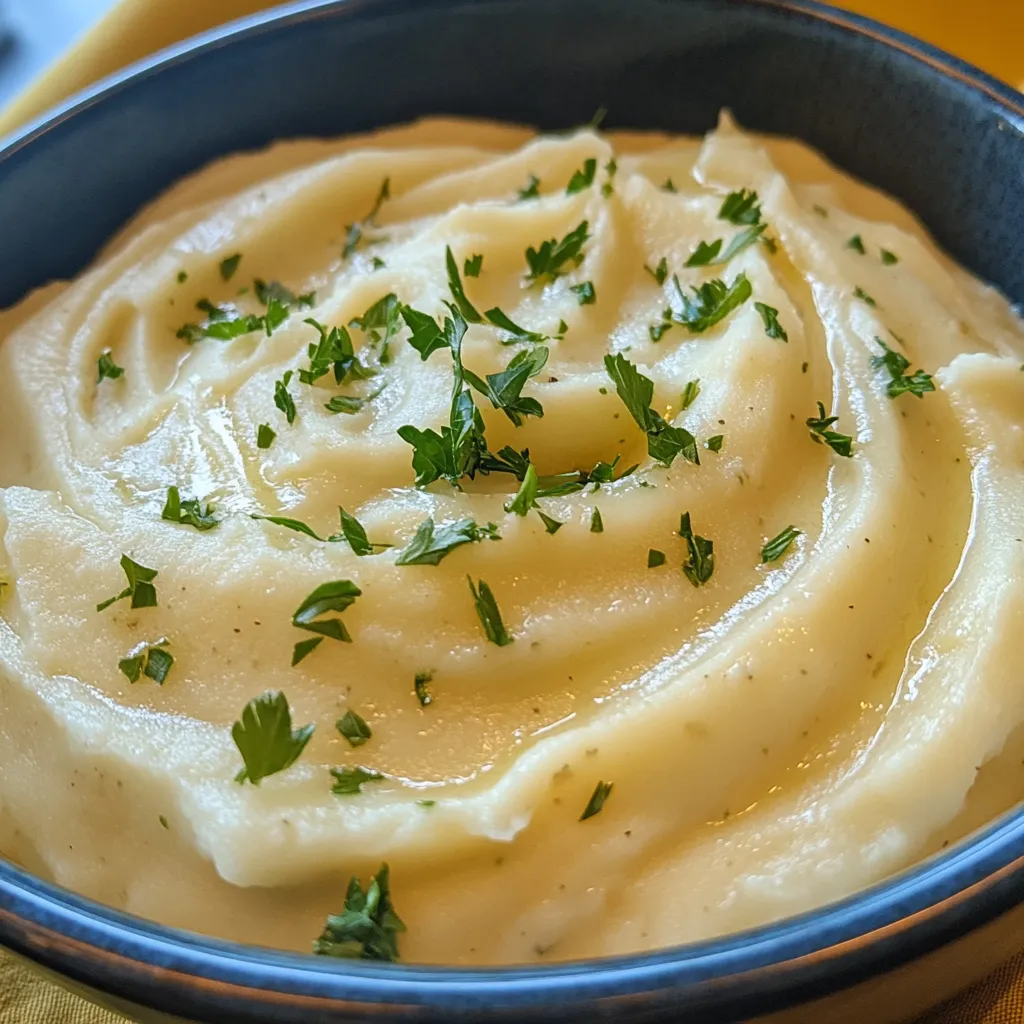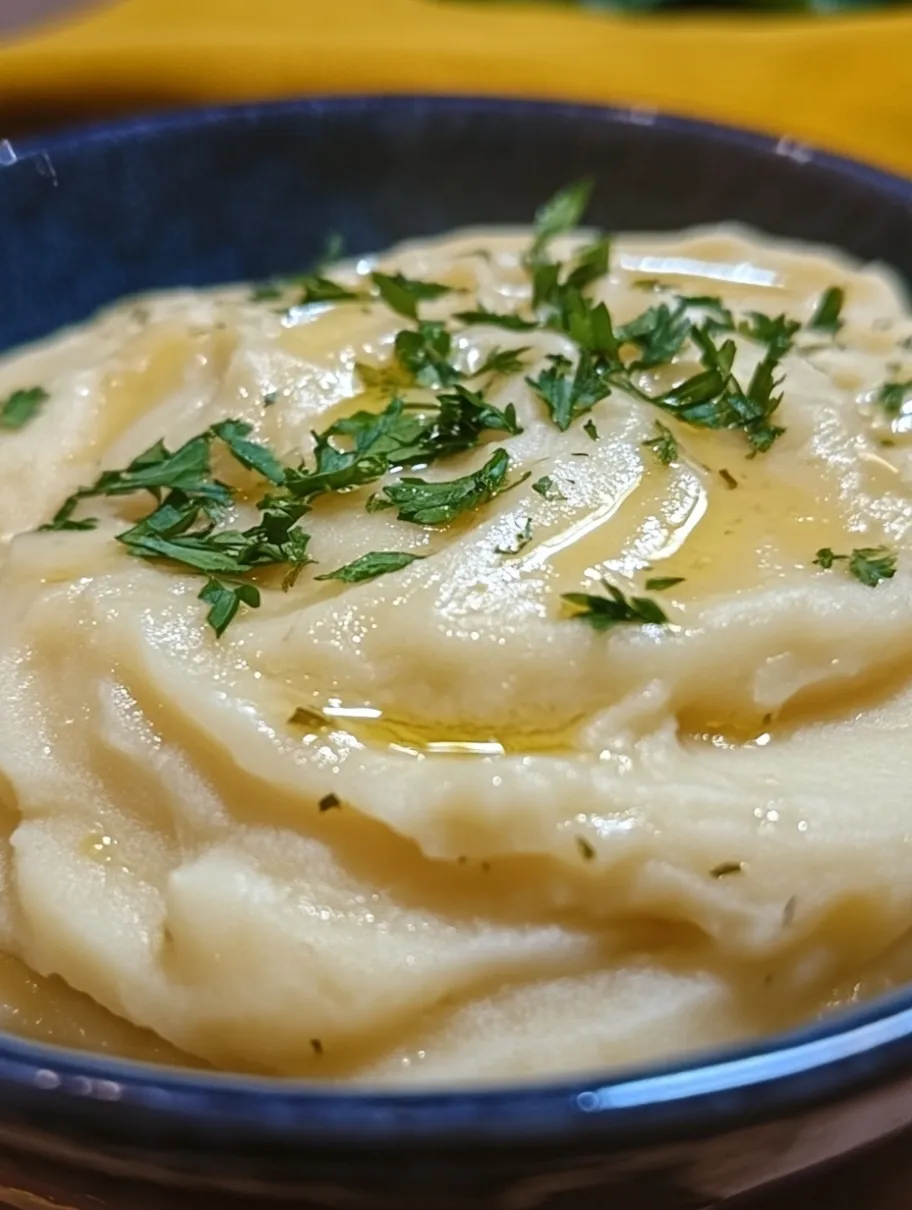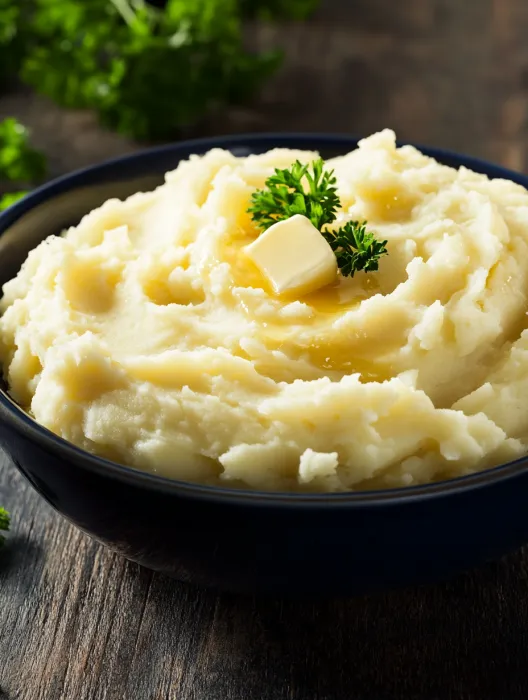 Save
Save
This creamy mashed potato recipe transforms simple ingredients into a luxurious side dish that's become my signature contribution to holiday meals. The velvety texture and rich buttery flavor will make you rethink everything you thought you knew about this classic comfort food.
I discovered this technique after years of making gummy, disappointing mashed potatoes. The first time I served these at Thanksgiving, my father-in-law who rarely comments on food asked for the recipe and now makes them himself.
Ingredients
- Russet potatoes 4 pounds Choose starchy russets for the fluffiest texture and peel them completely for the smoothest result
- Hot whole milk 1 to 1¼ cups Warming the milk prevents cooling the potatoes and creates silkier texture
- Unsalted butter 16 tablespoons Room temperature butter incorporates more easily than cold or melted
- Sea salt 1½ teaspoons Sea salt provides a cleaner flavor than table salt
- Fresh herbs for garnish Optional but adds beautiful color and freshness to the finished dish
Step-by-Step Instructions
- Prepare and boil potatoes
- Peel potatoes thoroughly and rinse in cold water to remove excess starch. For truly perfect potatoes, take the extra minute to remove those small dark spots or eyes with the tip of a peeler. Start potatoes in cold water which helps them cook evenly from inside out. Bring to a boil and cook until easily pierced with a knife but not falling apart, about 20-25 minutes. Proper doneness is crucial for ideal texture.
- Drain and begin mixing
- Transfer drained potatoes to your stand mixer bowl. Before adding attachments, break up the potatoes slightly by hand to prevent overworking them. Attach the whisk attachment and mix briefly on low speed to create a base texture before adding other ingredients.
- Add milk and butter
- Begin mixing on medium speed while slowly drizzling in hot milk. The temperature of the milk is critical here as cold milk can cause the potatoes to seize. Add the softened butter one tablespoon at a time, waiting a few seconds between additions. This methodical approach allows each piece to fully incorporate, creating an emulsion that results in that silky smooth texture. Season with salt at the end for perfect flavor.

My grandmother taught me the hot milk trick when I was twelve years old. She insisted that potato texture was the true measure of a good cook, and I've found over decades of cooking that she was absolutely right. The temperature of your dairy ingredients truly makes or breaks mashed potatoes.
The Secret to Perfectly Smooth Potatoes
The seemingly fussy step of removing the small dark spots or "eyes" from the potatoes makes a noticeable difference in the final texture. These spots contain higher starch concentrations that don't break down as readily, leaving tiny lumps even after thorough whipping. This extra minute of preparation elevates everyday mashed potatoes to special occasion status.
Make-Ahead Options
Prepare these potatoes up to two days before serving. Store them in a heat-proof container in the refrigerator, then reheat in a covered dish in a 325°F oven for about 30 minutes. To maintain the creamy texture, stir in an additional 2-3 tablespoons of warm milk and 1 tablespoon of butter during reheating. The texture stays remarkably close to freshly made.
Why Stand Mixer vs Hand Mashing
Using a stand mixer with the whisk attachment creates microscopic air bubbles that make the potatoes exceptionally light while maintaining their creamy consistency. Hand mashing can't achieve this same texture and risks overworking the potatoes which activates too much starch and creates a gluey result. The precise control of a stand mixer gives consistent results every time.

Recipe FAQs
- → What's the secret to making creamy mashed potatoes?
The secret lies in four key techniques: properly cooking the potatoes until just tender (not overcooked), using hot milk (not cold), adding room temperature butter gradually, and using a stand mixer with whisk attachment on the right speed settings. These steps ensure the potatoes become light and fluffy rather than gummy or dense.
- → Can I make these mashed potatoes ahead of time?
Yes! You can prepare them ahead and keep them warm in a covered dish in a low oven or transfer to a slow cooker on the warm setting. They'll stay creamy and delicious until ready to serve, making them perfect for holiday meals.
- → How should I store and reheat leftover mashed potatoes?
Store cooled leftovers in an airtight container in the refrigerator for up to 5 days or freeze for up to a month. When reheating, add a splash of milk and a bit of butter to maintain creaminess. You can reheat on the stovetop, in the oven, or microwave, but be careful not to overmix during reheating.
- → Why do you recommend russet potatoes specifically?
Russet potatoes are ideal for mashing because of their high starch content, which creates a fluffy, light texture when whipped. They absorb butter and milk beautifully, resulting in that classic creamy consistency that's harder to achieve with waxier potato varieties.
- → Can I substitute the milk or butter for dietary restrictions?
Yes, you can use plant-based alternatives. For dairy-free versions, substitute the milk with warmed almond, oat, or cashew milk and use a plant-based butter. The technique remains the same—add the hot milk slowly and incorporate the butter gradually for the best texture.
- → What's the purpose of removing the knots from the potatoes?
Removing the small knots (eyes) from potatoes is an optional step for achieving the absolute smoothest texture. These harder bits don't break down as readily during cooking and can create small lumps in the finished potatoes. This extra step is worth it for special occasions when perfect texture is desired.
